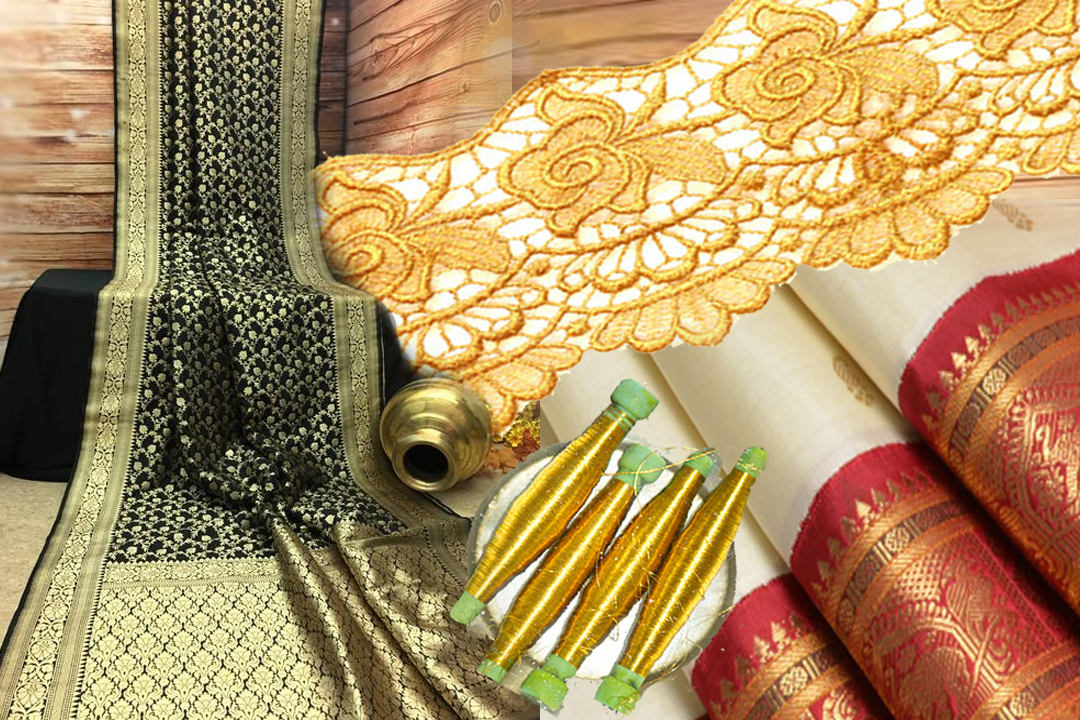- HOME
- About Us
- Mandatory Disclosures
- COURSES
- Campus Life
- Gallery
- Blogs
- Events
- Contact
Magic of metallic fibers

The concept of decorating the clothes is almost as old as the invention of clothes themselves. Our History gave many evidences that men folk employed the use of numerous objects and accessories to adorn their clothes. Today Fashion industry holds the pride of being one of the fastest growing industries both domestically and internationally. Every person wants to add value to his/ her garment. This enhances not only the look of the garment but also makes the wearer feel good of what he is wearing.
“Decorating a Garment” depends on the creativity of a designer. There are no limits for surface ornamentation. Almost everything around us can now be used for ornamentation. From printing, embroidery, dyeing to various trimmings, embellishments and weaving techniques etc are use to adorn the fabric.
Today metallic fibers are used in a variety of ways to create a variety of effects from eveningwear to protective gear. Metal gold is the kingdom of textiles fibers. Demand for these fibres is now increasing in today’s fashion industry. Many designers have been using more and more metallic fibers and fabrics in their modern designs. As we all know that glitter is the hallmark of all Indian festivities, sarees and similarly adorned dresses worn on such occasions. The shiny effect of these fibres create has become a symbol of the new millennium.
Textile artists create works of art by using yarn, threads and fibers sometimes in combination with paints or dyes. Metallic fibres are used to decorate the fabrics while weaving and also can be use for surface ornamentation of plain fabric with embroidery.
“Traditional Trivia”
Metallic yarns are the first ‘man made’ fibres, which came thousands of years before nylon or rayon. Gold and silver were hammered into thin sheets first, then cut into ribbons and then fibres are made and used in and on fabrics. The Persians made fabulous carpets with these Gold threads and the Indians, beautiful ornamental sarees with it. The metal threads were twisted, doubled or wrapped around some other threads such as cotton.
Since ancient times, gold and silver have been used as decoration in the clothing and textiles of kings, leaders, nobility and people of status. We can also use the term zari for metallic fibres. Zari has a historical as well as religious significance to its credit. During the Vedic ages, zari was associated with the grand attire of gods, kings and literary figures. The Ramayan, Mahabharat and RigVeda have made references to Zari craft. Zari signified opulence and wealth during the Mughal era. Zari handicrafts produced in Persia were imported to India and likewise many immigrant craftsmen set up their trade in the country as well.
The Zari trade has survived all the centuries so has brilliant craftsmanship, traditional Zari traders, who love their craft and have smoothly adapted to the changing times, by switching from old fashioned techniques to new ones. Gujarat is the world’s largest producer of Zari, and various Zari products such as thread, laces, borders, fringes, edges, etc.
Southern sarees prefer borders and linings of zari on silk and cotton. Like Kanjeevaram silk sarees from Tamil Nadu, Chanderi from Madhya Pradesh, Bnarasi sarees , Baluchari sarees etc.
“Metallic Fibres V/S Fashion Industry”
The world of Textiles is always changing, as new cultural influences meet technological innovations. Although the use of gold or silver in our clothing is expensive, still some couturiers use it in their textiles.
“Magic of zari in today’s world” is a beautiful addition on fabrics that enamours an old story of shine and gliter since historical times.
Modern designers use zari for making their collection. We can see zari in the bridal, traditional and even in indo-western collections of the designers. The market has responded well to zari adornments since long and though the switch has taken place from pure silk or gold to plastic core zari, there is no fall in the demand for zari-adorned fabrics.

